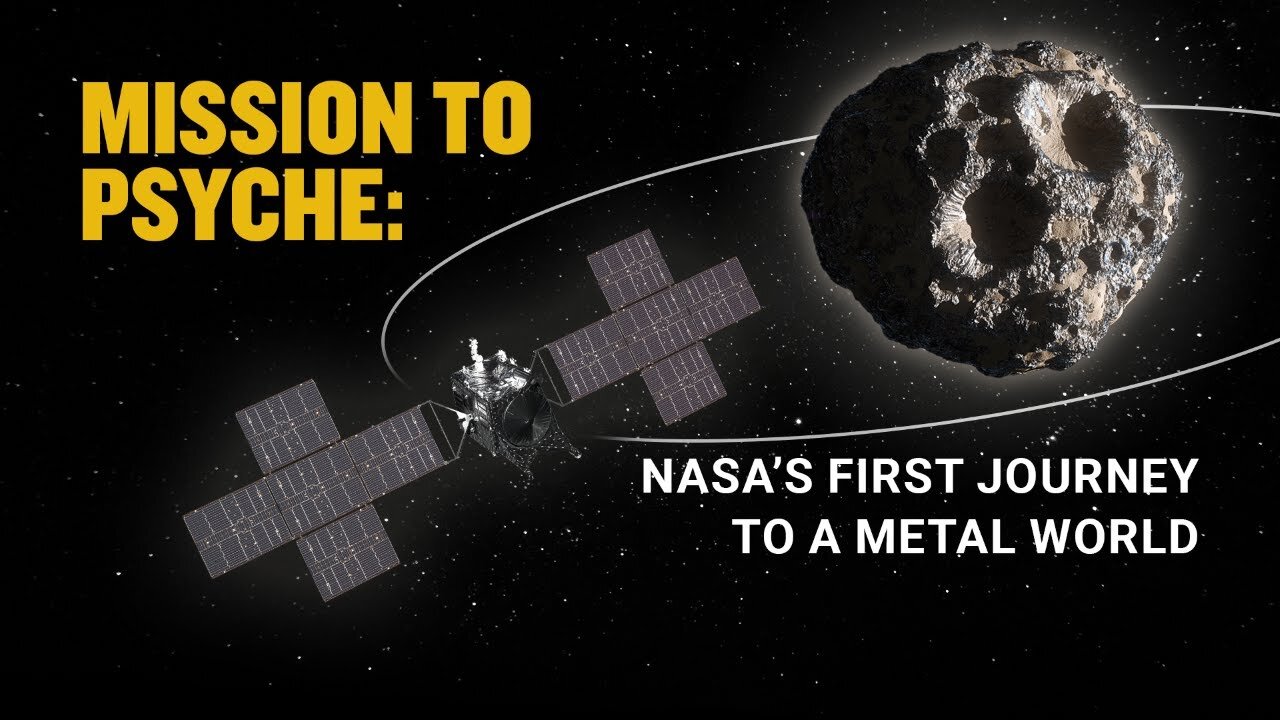Premium Only Content

NASAs Psyche Mission to a MetalRich Asteroid Teaser Trailer
NASA's Psyche mission is a fascinating exploration of a metal-rich asteroid known as 16 Psyche. Here's some information about this mission:
1. Objective: The primary objective of the Psyche mission is to study and understand the asteroid 16 Psyche, which is believed to be the exposed metallic core of a protoplanet. By studying this asteroid, scientists hope to gain insights into the early processes of planetary formation and the differentiation of planetary cores.
2. 16 Psyche: 16 Psyche is one of the most massive asteroids in the asteroid belt, located between Mars and Jupiter. It is unique because it is primarily composed of metal, likely iron and nickel, rather than the rocky and icy materials typical of most asteroids.
3. Scientific Goals: The mission aims to answer fundamental questions about the nature of planetary cores and the history of our solar system. Scientists want to understand how metallic cores of planets form and evolve, and what processes led to the formation of 16 Psyche.
4. Spacecraft: The Psyche spacecraft is designed to carry a suite of scientific instruments to study the asteroid. It is equipped with a multispectral imager, a gamma-ray and neutron spectrometer, a magnetometer, and a radio instrument. These instruments will allow scientists to analyze the asteroid's surface composition, topography, and magnetic properties.
5. Launch and Arrival: The Psyche mission was scheduled for launch in 2022, although my knowledge only goes up until January 2022, and I don't have information on its specific launch date. The spacecraft is expected to reach its destination, 16 Psyche, in 2026.
6. Exploration: Once at the asteroid, the spacecraft will orbit and study 16 Psyche for a period of about 21 months. Scientists will gather data on its composition, topography, and magnetic field to better understand the history
of this unique object.
7. Significance: The Psyche mission is of great scientific importance because it provides a rare opportunity to directly study a metallic core of a planetary body, which could help scientists better understand the processes that occurred during the early stages of planetary formation. Additionally, it can provide insights into the role of metallic cores in the magnetic field generation of planets.
8. Collaboration: The mission is led by NASA's Jet Propulsion Laboratory (JPL) in collaboration with several institutions and organizations, including Arizona State University, which leads the mission's science team.
The Psyche mission is a remarkable undertaking that promises to expand our understanding of the solar system's formation and the internal structure of celestial bodies. It may provide valuable insights into the formation and differentiation of planetary cores and contribute to our knowledge of the early history of our solar system.
-
 14:57
14:57
MichaelBisping
12 hours agoBISPING: The Complete History UFC's Lightweight Division | "Will ISLAM BECOME GOAT after UFC 311?"
8.38K1 -
 12:53
12:53
NC Dirt Hunter
23 hours agoMetal Detecting a Civil War Camp. Both Union and Confederate!
6.31K2 -
 18:14
18:14
Neil McCoy-Ward
22 hours agoThe European Union Is Getting Worse By The Day… (Now Germany 🇩🇪 Is In Big Trouble)
5.53K6 -
 14:06
14:06
Gun Owners Of America
16 hours agoTaking A Look At Pam Bondi's Mixed Record On Guns
3.99K5 -
 7:44
7:44
Tactical Advisor
18 hours agoBest Budget Benelli Shotgun | Orthos v Panzer Arms
3.9K -
 6:09
6:09
BIG NEM
10 hours agoThe Dark Truth About My Balkan Uncle's Past
8.64K1 -
 52:06
52:06
Uncommon Sense In Current Times
20 hours ago $0.24 earned"Gerrymandering Markets: A Deep Dive with Robert Bork Jr. into Biden's Antitrust Agenda"
5.58K -
 1:02:49
1:02:49
The Tom Renz Show
13 hours agoThe Democrats LA Fires & COVID Grand Jury
5.26K2 -
 47:49
47:49
PMG
17 hours ago $0.32 earned"There Ain’t No Grace in It! What to do when you’re worn out!"
4.53K1 -
 3:19:06
3:19:06
FreshandFit
8 hours agoAnnoying HOES Kicked Off After HEATED Debate On Rape Culture!
68.2K72